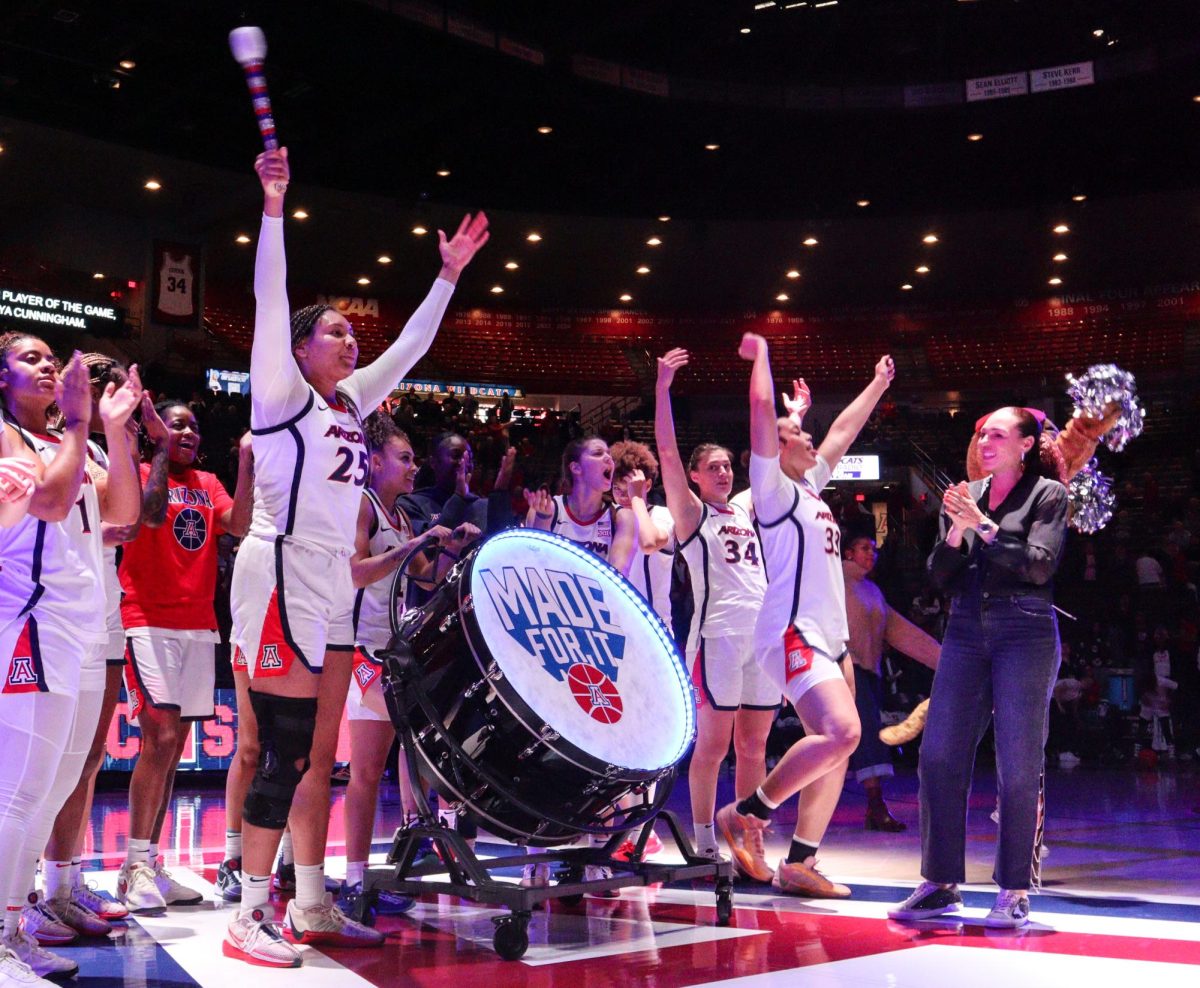W hen the women’s basketball team was playing Washington in McKale Center on Sunday, an elderly woman approached me.
I was sitting at press row, getting my things together for the game, and she, fully clad in Arizona gear, came up from behind and tapped me on the shoulder.
“What place are we in the Pac-12?”
“Last.”
“Even after that amazing win the other day?”
“Yeah, still in last.”
“Well, there’s always next year.”
It was a simple, succinct conversation. Yet, in a way, it was exemplary of the Wildcats’ season.
Arizona played out of its mind and won by 39 points on Thursday. Yes, you read that right. A team that had lost eight games in a row blew the Cougars out of the water. Now, Washington State isn’t very good — it sits 11th in the Pac-12 standings — but Arizona is supposed to be the worst team in the conference, and it certainly didn’t play like it.
Against Stanford, Washington, Oregon and ASU, however, the Wildcats did. Everyone looks like the worst team in the conference against Stanford but there was a common denominator against the other three schools. They were all played on the road, and Arizona lost, on average, by 16 points.
In Arizona’s eight other losses, five were at home, including Sunday’s loss to Washington. In those five losses, the Wildcats only lost by five points on average.
Arizona has actually held its own in the majority of its home games. Statistical analysis, or even a simple look at the team’s record, might indicate otherwise, but the fact is this team has remained competitive and, on most nights, plays much better than its last-place standing in the Pac-12 might indicate.
“There’s always next year,” has a negative connotation, thanks to its implication that this year is already over. But it’s not quite over yet — there are still three games and the Pac-12 tournament to be played. Arizona will not win the Pac-12. It might not even win a game the rest of the season, but despite most signs pointing elsewhere, this team has a bright future.
There are two graduating seniors on its roster, only one of which will be a significant loss (point guard Shanita Arnold).
Davellyn Whyte, who has been one of Arizona’s best players for each of her first three seasons, averaging 17.3 points, 6.6 rebounds and 3.5 assists per game this year, returns.
Forward Erica Barnes, Arizona’s leading rebounder at 7.9 per game, and guard Candice Warthen, who broke out for 36 points in a game earlier this season, both still have two years of eligibility remaining.
Aley Rohde, Erin Butler and Layana White have been getting significant playing time in recent weeks. All three have started Arizona’s last two games, and Rohde has started in every game this season. They are freshmen.
At various points this season, all of those players have performed pretty well, just never at the same time, which is largely why at times the team might appear to play better than its record. But, as the cliché says, don’t judge a book by its cover. Wait until next year for that.
With head coach Niya Butts at the helm, this team is poised to be a legitimate threat in the Pac-12 next year.
As the old lady said, there is always next year. Except this time, it may actually ring true.
—Zack Rosenblatt is the assistant sports editor. He can be reached at sports@wildcat.arizona.edu or on Twitter via @WildcatSports.








